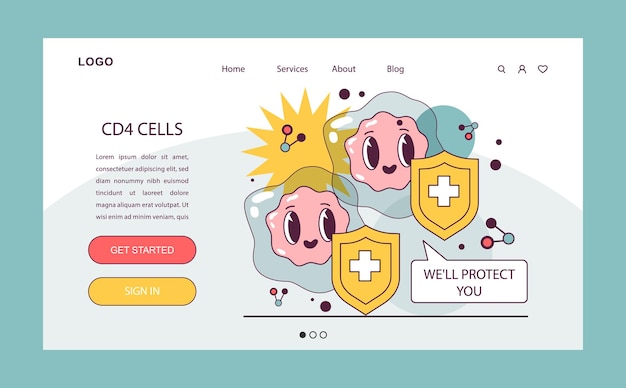Health Coverage Tax Credit: Your Guide to TAA Assistance

The Health Coverage Tax Credit (HCTC) assists individuals receiving Trade Adjustment Assistance (TAA) by subsidizing their health insurance premiums, making coverage more affordable during periods of unemployment.
Navigating the complexities of health insurance can be daunting, especially when facing unemployment. The Health Coverage Tax Credit: Assistance for Individuals Receiving Trade Adjustment Assistance (HCTC) offers a lifeline by making health coverage more affordable during transitional periods.
Understanding the Health Coverage Tax Credit (HCTC)
The Health Coverage Tax Credit (HCTC) is a federal tax credit designed to help eligible individuals and their families afford health insurance coverage. It’s particularly beneficial for those receiving Trade Adjustment Assistance (TAA) or Alternative Trade Adjustment Assistance (ATAA) benefits, as well as certain retirees.
The HCTC works by paying a portion of your health insurance premiums, effectively reducing the amount you pay out-of-pocket. This can make a significant difference in your ability to maintain health coverage during periods of job transition or retirement.

Who is Eligible for the HCTC?
Eligibility for the HCTC is determined by several factors, primarily related to your receipt of TAA/ATAA benefits or your status as a Pension Benefit Guaranty Corporation (PBGC) recipient. Here’s a breakdown:
- TAA Recipients: Individuals receiving Trade Adjustment Assistance (TAA) benefits due to job loss resulting from increased imports or shifts in production to foreign countries.
- ATAA Recipients: Individuals receiving Alternative Trade Adjustment Assistance (ATAA) benefits, a program similar to TAA but with different eligibility requirements.
- PBGC Recipients: Individuals aged 55 and over who are receiving benefits from the Pension Benefit Guaranty Corporation (PBGC).
It is important to note that you must also meet certain other requirements, such as not being enrolled in Medicare, Medicaid, or the State Children’s Health Insurance Program (CHIP), and not being claimed as a dependent on someone else’s tax return.
In summary, the HCTC is a valuable resource for eligible individuals, providing much-needed financial assistance to maintain health coverage during challenging times.
Navigating Trade Adjustment Assistance (TAA)
Trade Adjustment Assistance (TAA) is a federal program that provides assistance to workers who have lost their jobs as a result of foreign trade. Understanding how TAA works is crucial for maximizing its benefits, including access to the Health Coverage Tax Credit (HCTC).
TAA offers a range of benefits, including job training, income support, job search assistance, and relocation allowances. It’s designed to help workers acquire new skills and find new employment opportunities.
Understanding TAA Benefits
TAA benefits are tailored to the individual needs of each worker, but typically include the following:
- Job Training: Financial assistance for training programs to acquire new skills relevant to current job market demands.
- Income Support: Weekly payments to supplement income while participating in training programs.
- Job Search Assistance: Resources and support to help with job searching, resume writing, and interviewing skills.
The eligibility for TAA depends on specific criteria related to job loss due to foreign trade. Workers must apply for TAA benefits through their state workforce agency.
In conclusion, understanding TAA benefits is vital for those who qualify. It not only provides crucial support during unemployment but also acts as a gateway to the Health Coverage Tax Credit.
HCTC and TAA: A Synergistic Relationship
The Health Coverage Tax Credit (HCTC) and Trade Adjustment Assistance (TAA) are intricately linked, offering a synergistic solution for workers displaced by foreign trade. One program often complements the other, providing a comprehensive support system.
The HCTC is specifically designed to assist individuals receiving TAA benefits, making it easier for them to maintain health coverage while they retrain and search for new employment.
Combining TAA and HCTC Benefits
Combining TAA and HCTC benefits can provide a significant advantage. Here’s how:
The HCTC can significantly reduce the cost of health insurance premiums, while TAA provides income support and job training resources. This combined support can help workers maintain their health and well-being while pursuing new career opportunities.
- Reduced Healthcare Costs: HCTC lowers the financial burden of health insurance, enabling access to necessary medical care.
- Income Stability: TAA provides income support, helping to cover living expenses during unemployment.
- Career Advancement: TAA offers job training, boosting skills and employability in the long term.

In summary, the relationship between HCTC and TAA is designed to provide a holistic support system. This synergy offers financial relief and opportunities for career advancement.
Choosing a Qualifying Health Plan for HCTC
Selecting the right health insurance plan is a crucial step in maximizing the benefits of the Health Coverage Tax Credit (HCTC). Not all health plans qualify, so it’s important to understand the requirements.
To be eligible for the HCTC, your health plan must meet certain criteria set by the federal government. These criteria ensure that the plan provides comprehensive coverage and meets quality standards.
Types of Qualifying Health Plans
Generally, the following types of health plans qualify for the HCTC:
These plans are designed to provide comprehensive coverage, including doctor visits, hospital care, and prescription drugs. However, it’s important to verify that the specific plan you’re considering is approved for the HCTC.
- COBRA Continuation Coverage: Continuing coverage under your former employer’s health plan.
- State-Sponsored Coverage: Health plans offered through your state government.
- Qualified Health Plans from the Health Insurance Marketplace: Plans available through the Affordable Care Act (ACA) marketplace.
In conclusion, choosing a qualifying health plan is essential to take full advantage of HCTC benefits. Ensuring your plan meets the criteria can provide significant financial relief.
Applying for the Health Coverage Tax Credit
The application process for the Health Coverage Tax Credit (HCTC) involves several steps, from gathering necessary documentation to completing the required forms. Understanding this process is crucial for a smooth and successful application.
The process typically begins with confirming your eligibility and gathering all relevant documents. Then, you’ll need to complete the required forms and submit them to the IRS.
- Eligibility Verification: Ensure you meet the eligibility criteria based on your receipt of TAA/ATAA benefits or PBGC payments.
- Documentation Gathering: Collect documents such as proof of TAA/ATAA eligibility, health insurance policy information, and Social Security numbers.
- Form Completion: Fill out Form 8885, Health Coverage Tax Credit, accurately and completely.
Submitting Your Application
Once you’ve completed Form 8885, you can submit it to the IRS along with your tax return. Alternatively, you can choose to receive advance payments of the HCTC to help cover your monthly health insurance premiums.
In summary, applying for the HCTC requires careful attention to detail. Proper preparation and accurate completion of forms are essential for a successful outcome.
Maximizing Your HCTC Benefits
To fully leverage the Health Coverage Tax Credit (HCTC), it’s important to understand strategies that can maximize your benefits. This involves careful planning and an understanding of the program’s rules.
One key strategy is to carefully choose a health plan that qualifies for the HCTC and provides the coverage you need. Additionally, it’s important to stay informed about any changes to the HCTC program or eligibility requirements.
Here are some tips to maximize your HCTC benefits:
- Choose a Cost-Effective Plan: Select a health plan that balances coverage with affordability.
- Stay Informed: Keep up-to-date with any changes to the HCTC program or eligibility rules.
- File Taxes Accurately: Ensure your tax return is accurate and includes all necessary information for claiming the HCTC.
Maximizing your HCTC benefits requires proactive planning and staying informed. Understanding the nuances of the program can lead to significant savings.
| Key Point | Brief Description |
|---|---|
| 💰 HCTC Overview | Helps eligible individuals afford health coverage by paying a portion of their premiums. |
| 🛠️ TAA Benefits | Offers job training, income support, and job search assistance to workers displaced by trade. |
| ✅ Eligibility | Requires receipt of TAA/ATAA benefits or PBGC payments, among other criteria. |
| 🏥 Qualifying Plans | Includes COBRA, state-sponsored coverage, and qualified health plans from the marketplace. |
Frequently Asked Questions
▼
The HCTC is a federal tax credit aimed at helping eligible individuals, particularly those receiving Trade Adjustment Assistance (TAA), afford health insurance coverage by subsidizing premiums.
▼
Eligibility primarily includes those receiving TAA or ATAA benefits, as well as certain individuals receiving benefits from the Pension Benefit Guaranty Corporation (PBGC) and meeting specific criteria.
▼
Qualifying plans typically include COBRA continuation coverage, state-sponsored health plans, and qualified health plans from the Health Insurance Marketplace, ensuring comprehensive coverage.
▼
Application generally involves verifying eligibility, gathering documentation, completing Form 8885, and submitting it with your tax return, or opting for advance payments.
▼
Yes, you can elect to receive advance payments of the HCTC, which helps lower your monthly health insurance premiums instead of waiting to claim the credit on your tax return.
Conclusion
The Health Coverage Tax Credit (HCTC) provides crucial support to individuals receiving Trade Adjustment Assistance (TAA), making health insurance more accessible during times of transition. Understanding the eligibility requirements, qualifying health plans, and application process can help you maximize the benefits of this important program.





